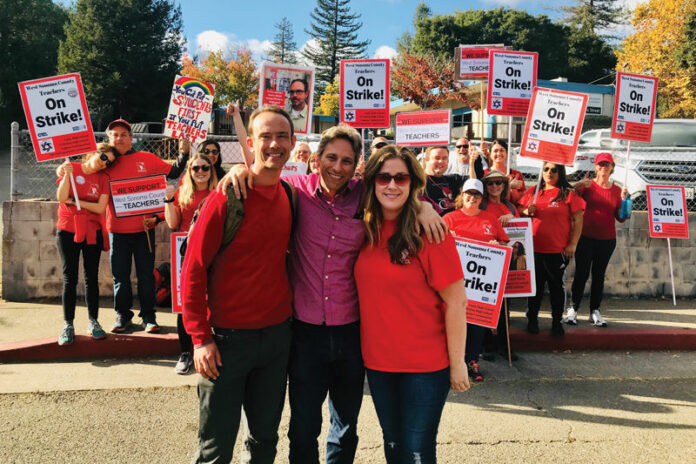It wasn’t the longest strike in American labor history — that was the nine-month United Mine Workers strike of 1946 — but it was a tense and nerve-wracking three days for striking high school teachers and besieged district administrators in west county.
The teachers hit the picket lines at Analy, El Molino and Laguna high schools on Wednesday morning, and by the end of the day on Friday, they had a new tentative agreement in hand that gave them almost everything they’d been asking for, lo these many months.
The tentative agreement provides teachers with a 12% wage increase over three years, with the third year contingent on the passage of a new parcel tax that will appear on the ballot in March 2020. Health and welfare benefits will increase over the life of the contract, and both the district and union will work collaboratively to evaluate health, vision and dental benefit plans to provide better services, costs and options.
Also included in this agreement are wage increases for psychologists, speech therapists and nurses.
After more than a year of negotiating, what changed?
“The strike changed everything,” said Brian Miller, a math teacher at Analy and Union’s lead negotiator. “The strike crystallized how together our members were and how supported we were by the community. It created a crisis moment where the district had a change of heart — really a change of vision and a new direction.
Teachers union president Lily Smedshammer said she felt the district’s change of direction was caused by “a combination of many voices: parents, students and the politicians and community leaders who were getting involved” on the side of the union.
Both Miller and Smedshammer said that Superintendent Toni Beal’s change of direction broke the logjam that had held the two sides apart for so long.
Beal described how her thinking evolved.
“I woke up one morning thinking that if we were going to get through this as a district, we needed to change the dialogue,” she said. “With all the negativity in the air, we needed to focus on the positive if we were going to make it through. This led me to questioning how we could increase revenues instead of focusing on reductions.”
“This change in thinking came for me when I stepped back and looked at the evidence in front of me,” she said, listing them off in a post-settlement email to Sonoma West.
• The list of potential reductions were further dividing our district and cutting the very core of our staffing and programs.
• Continuing to reduce programs and staff would further erode our programs and cause fewer students to attend our schools, which would create less revenue and more cuts. There had to be a way to stop the downward spiral.
• I also realized that the seven-period day makes our district unique and brings students to our district. It also helps to attract and keep our teachers.
• The Community Action Coalition had made an offer to help increase revenues by focusing on marketing our programs and seeking other ways to increase revenue.
• The hope is that these increased revenues could possibly offset the need for drastic reductions.
Along with this change of viewpoint came a change of tactics. On Friday, Beal invited the union to another bargaining session — but one with a difference. The district left its controversial attorney Paul Boylan out of the final negotiations, and the teachers union left its CTA rep outside as well.
“Once that core group got in the room together, we were able to come up with solutions that benefited both groups,” Beal said.
By the end of the day, they had a tentative agreement hammered out.
“I’ve heard of tentative agreements signed that are kind of angry, where one side feels beaten or the side feels angry at the other side and not collaborative. But that is not what we experienced,” Miller said. “I have all the faith that we’re part of a district that’s going to move forward with a mindset of growth and with a mindset of exemplifying what is great about us.”
Teachers wore their red shirts to class one last time on Monday. They met as a group in front of the school.
“We had a thank you sign for the parents that were pulling up to drop the kids off,” Smedshammer said. “We all stood out there with our administrators, which was really nice, and we greeted parents and students. Then we came together at 7:25, and we started the unity clap — which is the slow clap that builds to a pitch — and we walked into the school together as a big group. It was a nice way to come back.”
62.5
F
Healdsburg
April 19, 2025








